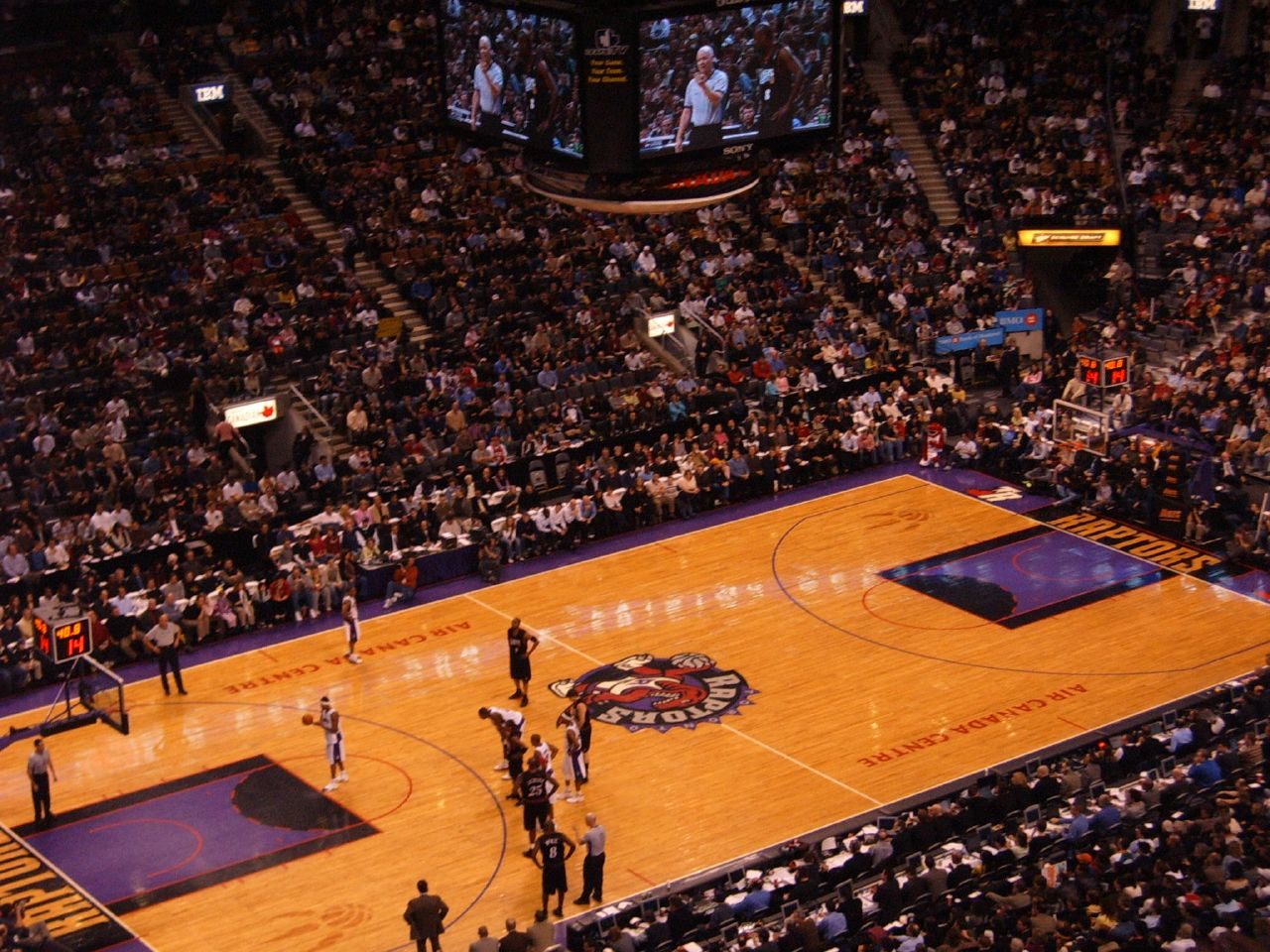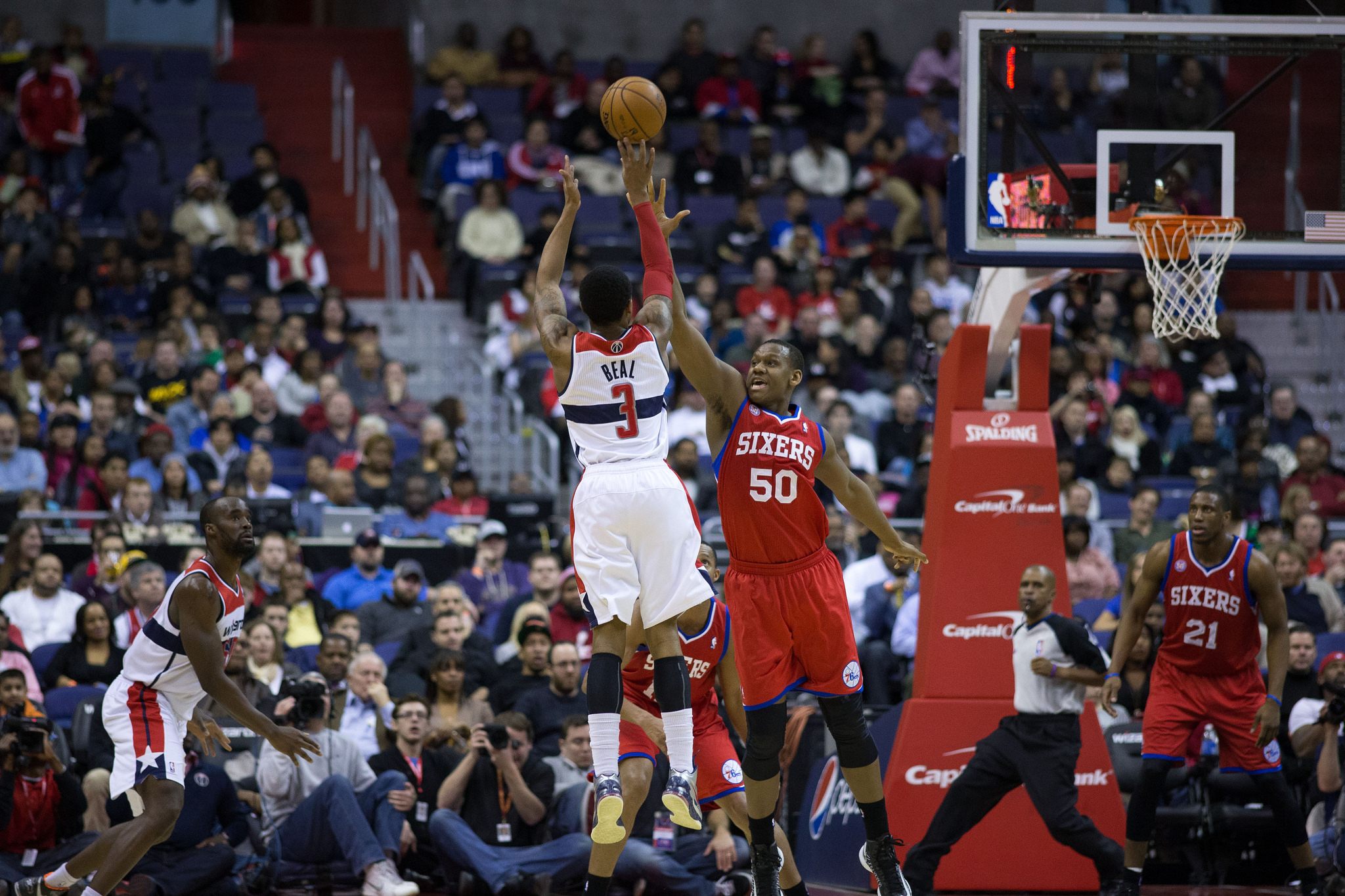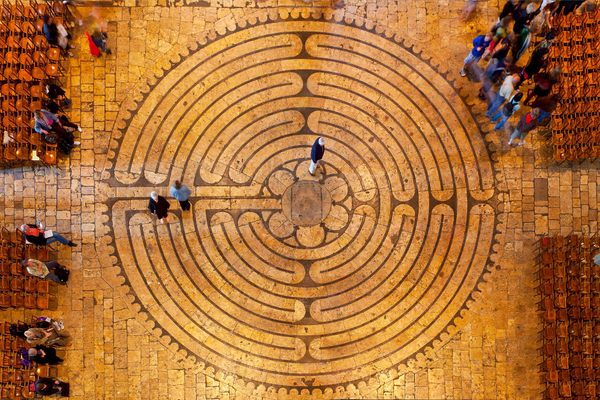What It’s Like to Run a Fan Site For the Arguably Worst Team in NBA History
The Philadelphia 76ers have brought shame to the City of Brotherly Love.
The paper bag says it all: a 76ers fan at the December 2015 game against the Memphis Grizzlies in Philadelphia. (Photo: Mitchell Leff/Getty Images)
This NBA season has been extraordinary. The Golden State Warriors set the record for most wins in a regular season in NBA history, losing only nine games the entire season. The San Antonio Spurs lost only 15 games, the same as the eventual champion Warriors had last season; in a normal year, the Spurs would have been obvious favorites to win the title, and this year they didn’t even make the finals. We may have seen the last pairing of Oklahoma City Thunder’s legendary duo of Kevin Durant and Russell Westbrook. There is a rematch in the NBA Finals, something that usually only happens about once per decade.
It’s also been an extraordinary season for the Philadelphia 76ers, for completely opposite reasons. The team finished dead last in the NBA, winning only 10 games. They set the longest losing streak of any team in professional sports, a 27-game string of losses stretching back to the previous season. Their claim for worst-ever season was broken when they got double-digit wins—but that is only one more than the actual worst team, the 1972 76ers. With all the attention on the winning side of the ledger, many fans have missed one of the most incredible, if depressing, stories in sports history.
Jake Pavorsky is not one of those fans.

Allan Iverson, now retired, next to the team logo at Philadelphia’s Wells Fargo Center. (Photo: Kevin Burkett/CC BY-SA 2.0)
Pavorsky helps run Liberty Ballers, a Philadelphia 76ers site under the larger umbrella of SBNation, a network of sites for basically every professional sports team. Pavorsky has been in a leadership position at the site since the fall of 2014, which would not normally be notable except for the fact that the guy is only 19 years old today.
The team did reach the finals in 2001, but Pavorsky has no memory whatsoever of the series. His memories of basketball begin a few years after that, during a long stretch of decidedly average 76ers teams that, as it would turn out, would be a high point for the franchise during Pavorsky’s lifetime. “There’s really never been that many good memories for me as a Sixers fan,” he says. “You hear about the basketball culture in Philadelphia, what the Sixers used to be, all the great names that came through here. And people my age just really haven’t seen that.”
In the NBA, the top 50 percent of teams make the playoffs; the 76ers, during this stretch, typically would make the playoffs only to lose immediately. Four years ago, the team missed the playoffs completely. The three seasons since then have been something else entirely, perhaps the most extreme strategy of its kind in sports history. Extreme, in this case, does not mean “fun.”
As the location of the worst franchise in modern basketball history, Philadelphia is an unlikely spot. The 76ers have won three championships, and the Philadelphia Warriors, which played in the city until 1962, won two, putting the city in the upper echelons of the winningest cities in the NBA. (The Philadelphia Warriors are now, of course, the Golden State Warriors.) This is the home of Wilt Chamberlain, who scored 100 points in a single game as a Philadelphia Warrior; of Julius Erving, the high-flying “Dr. J”; the initial home of Charles Barkley; the home of Allen Iverson, perhaps the most controversial player of the past quarter century; and even the initial home of one Andre Iguodala, who, um, won the title of Most Valuable Player in the NBA Finals last year on his current team, the Golden State Warriors.

The 76ers vs Raptors in 2005. (Photo: Cleavers/CC BY-ND 2.0)
For a city very often described as “gritty,” the fans are the grittiest. There’s the infamous time in 1968 that Eagles fans hurled snowballs at Santa Claus, but less known is that Philadelphia Eagles fans have thrown so many snowballs at basically anyone within hurling distance that the NFL was forced to create a rule that all seats must be swept clean of snow before a football game starts. More dangerous than that is the time Phillies fans threw D-cell batteries at a player who declined to join the team.
This all adds up to a singularly strange situation: a legendary team in a very large city with arguably the most passionate sports fans in the country, that’s saddled with a team that’s truly terrible. And not just terrible—intentionally awful.
To understand how 76ers fans and other dedicated followers of terrible sports fans fare, it helps to understand how the Philadelphia team came to have such a record-setting season. In the NBA, like in other sports, the draft system for young players is set up as a kind of fairness-creation mechanism. Theoretically, the worst teams in the league get the highest picks, meaning they get the best young players from college or high school or overseas. This keeps the league competitive; a pure lottery could result in the best teams becoming better and the worst teams becoming worse. (There is a small lottery in the NBA; the precise order of the draft picks is randomized, so that the worst team doesn’t necessarily get the top pick, but is weighted so the worse you are, the higher a chance you have of getting a better pick.)

The 76ers playing in 2013. (Photo: Keith Allison/CC BY-SA 2.0)
This attempt towards fairness has a dark underbelly in that it can actually benefit a team to perform badly. This is a very tricky position; it is unethical and unpopular to lose games on purpose, and also not really something players are interested in doing. But coaches and general managers (the latter in charge of trades and contracts, basically deciding who plays on a team) can make moves that cripple a team. Coaches and general managers usually do not admit to “tanking” a season in order to get a better draft pick, but there are plenty of examples through NBA history that are, at the very least, questionable. The 2002-2003 Cleveland Cavaliers traded away all their top three scorers in suspiciously terrible trades, and ended up tied for the worst record in the league. Probably not-so-coincidentally, the team landed Lebron James, an Ohio native and arguably the best player of his generation, in the following draft.
This draft setup penalizes the middle of the league most. The 76ers, in the middle years of the 2000s, were a mediocre team, trapped in the quicksand of the draft procedure. “They were trapped in the middle, which is the worst place to be in the NBA,” says Pavorsky. They were slowly sinking from a mediocre team to a middling team, missing the playoffs in the 2012-2013 season for the first time in years. Then they hired Sam Hinkie, an analytics obsessive who has given speeches at the MIT Sloan Sports Analytics Conference, to become the general manager.
Photo of a Philly fan | Spurs beat 76ers 119-68 w/out Duncan, Manu & Kawhi: https://t.co/9FXwC7RY0o pic.twitter.com/LUqkvsM6xH
— Ballislife.com (@Ballislife) December 8, 2015
This is where things get crazy. Hinkie and the new majority owner of the team, Josh Harris, openly discussed their intention to radically rebuild the team. Within a couple of years they traded every decent player on the still-decent 76ers, mostly for draft picks from other teams or extremely young and unproven players. This would result in a dramatically worse team than the year before, and would continue as long as it could: the team would tear down its entire team and place its entire hopes for the future on the NBA draft. This strategy became known by late 2014 as “the process,” and by sometime in 2015 it became capitalized: The Process.
Basketball officials frowned on The Process, and the league president publicly made a little noise about changing the rules to make it illegal. But he didn’t have to; as it stands, it’s unlikely that many other teams have any interest in following the 76ers’ lead. The 76ers were the second-worst team in the league in the 2013-2014 season, the third-worst in the 2014-2015 season, and dead last this year, the 2015-2016 season. Only this year, in the 2016 draft, will the 76ers actually have the number one pick, but each year they’ve had several very high choices and prominent trades for young players. None of them have worked out. One injury-prone player missed the entirety of the past two seasons; he has yet to play a single minute in the NBA. One decided to play in Turkey for a couple more years; he has yet to play a single minute in the NBA. One was traded to the 76ers in 2013 and immediately got hurt and missed the entire season. The team scored the Rookie of the Year one year and traded him for a bunch more draft picks a year later. Their two best players play the same position and can’t seem to both be on the court at the same time. It is chaos.
What this has meant is that the Philadelphia 76ers have somehow managed to stay one of the worst teams in the league despite racking up some of the hottest young players in the NBA. Year after year, the team stinks, they get a great draft pick, and then stink again. It is perhaps the most unprecedented stink streak in NBA history.
“Very trying, I would say,” says Pavorsky, “is probably the best way to put the past three years.”

Miami Heat and Philadelphia 76ers play in Miami, 2014. (Photo: charlieh0tel/CC BY-ND 2.0)
The psychology of sports fans is a fairly well-studied subject. According to an article in the Association for Psychological Science, “Research shows similarities between a fan’s identification with a sports team and how people identify with their nationality, ethnicity, even gender.” Except, obviously, a team’s success is much more fluid and volatile than the success of one’s nationality or culture. A 1992 study found that fans’ perceptions of their own future and worth was affected dramatically by whether their team lost.
Though whether a team wins or loses can have a distinct psychological effect on a fan, a major part of the pleasure of being a fan is in the community element, which is largely separate from a team’s success. Whether or not a team wins, the community, the feeling of having a common interest and goal, remains, which is why famously non-winning teams like the Chicago Cubs still retain gigantic fandoms.
The Philadelphia 76ers fans not only get to feel a community with those who “stick with” the team during these hard years, but they’re also planning for the future: if “The Process” does work, and the team does become competitive in a few years? It’ll be an astounding comeback, for sure, but there’s also a more basic element: the team can’t really get any worse. This kind of has to be the bottom of the barrel.
It is actually remarkable how long the city put up with the strategy, but just a few months ago, enough seemed to be enough. Hinkie resigned from the team on April 6th amidst mounting pressures from fans and new management, penning a 13-page, extremely strange resignation letter.
Pavorsky is not among the dissatisfied. “People gave them a hard time for what they did, but it was something that had to be done,” he says. “Whether it works out or not, I’ll stand by it forever.” He refers to himself and his ilk as “Process-trusters,” those who believe that Hinkie’s strategy will pay off sometime down the road. This year, after a half-decade of garbage teams and a decade more of uninspiring ones, the Philadelphia 76ers will, hopefully, have a selection of some of the best young talent in the league. That guy who was injured for two years? He’ll play. The guy who stayed in Turkey? He’s here now. And the biggest prize, the number one pick in the draft, will be a 76er.
“I don’t know if this was the original plan to be this bad for this long,” says Pavorsky. “I just hope that the next five to ten years are so great that it makes all this pain and suffering worth it.” For Philadelphia, there’s always next season.














Follow us on Twitter to get the latest on the world's hidden wonders.
Like us on Facebook to get the latest on the world's hidden wonders.
Follow us on Twitter Like us on Facebook